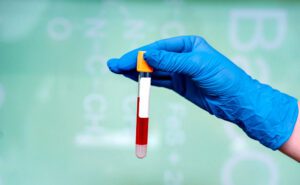Disclaimer: This article, “First Pregnancy Over 35: Part I,” contains no medical or health advice. The information provided is based on the author’s personal experience. They are intended solely for general informational and educational purposes only and are not meant to replace professional advice. Therefore, before taking any action based on the contents of this article, you are strongly encouraged to consult with the appropriate professionals.
After much deliberation, planning, and uncertainty, me and my wife decided to become parents. Parenthood, however, calls for sacrifice, control, patience, planning, and discipline. We had your reasons for delaying pregnancy, but now the question that is keeping us awake at night is: are we too late? Will my wife experience any complications during labor? Will our newborn be healthy? Are there any other significant medical conditions that we should be aware of? Would our child suffer from any lifelong illnesses? The reality is that we are over 35, and my wife’s prime reproductive years have passed. Therefore, all of these questions are relevant and warranted on our part. We therefore decided to seek professional medical guidance and consult an OBGYN.
Now, seeking assistance is voluntary, but ensuring the safety of the mother and the child is mandatory. Obviously, we could have conceived naturally on our own, but we knew that seeing a gynecologist would increase our chances of becoming pregnant sooner rather than later. So, in a nutshell, all hope is not lost simply because we are over 35 years old. Today, a growing number of people are delaying parenthood until their late 30s or 40s. With the correct application of fertility-enhancing medications along with a nutrient-dense diet, there is every chance in the world of having a healthy baby. But pregnancy over 35, or geriatric pregnancy, does have its own pros and cons.

One advantage is that older mothers have greater life skills and are better off financially. Also, children born to mothers in their 30s or 40s may thrive physically, socially, and academically. In terms of the drawbacks, geriatric pregnancy may lead to:
Longer conceiving time: Egg quality and quantity decline in your mid-30s. As a result, older eggs are harder to fertilize.
The chances of multiple pregnancies increase. Having twins is more likely the older you are. This is because fluctuations in hormone levels can trigger the release of multiple eggs at once.
High blood pressure that causes Pre-eclampsia: A rapid increase in the mother’s blood pressure after the 20th week of pregnancy may result in devastating consequences for both the mother and the baby. There may also be swelling in the legs, protein in the urine, poor vision, severe headaches, rib pain, and shortness of breath.
![]() Best Foods For A Healthy Heart
Best Foods For A Healthy Heart
Gestational diabetes is a condition diagnosed between the 24th and 28th weeks of pregnancy when the mother cannot produce enough insulin. Consequently, glucose remains in the blood and cannot be utilized as a source of energy, and this lack of insulin may increase a newborn’s breathing difficulties.
Miscarriage is the unintended loss of a pregnancy prior to the 20th week.
A premature birth occurs when a child is born prior to 37 weeks of gestation. The earlier a baby is born, the higher the likelihood of death or severe disability.
Low birth weight refers to babies born under 5 pounds or 8 ounces. A tiny newborn may struggle to eat, develop size, and prevent infections.
The C-Section, or Caesarean Section, is a surgical procedure most frequently associated with geriatric pregnancy, where the risks include infection, bleeding, blood clots, abdominal pain, and surgical injury, among others.

A chromosome disorder like Down syndrome: A person with Down syndrome has an extra chromosome, which is the result of abnormal cell division during early fetal development. This extra copy alters the baby’s brain development and appearance, causing lifelong mental and physical challenges.
Pregnancy is a journey that requires time, planning, and optimism. So, how did we begin planning for it?
We started off by submitting ourselves to the qualified opinion of professionals for a preconception checkup. Preconception care is the foundation of the best prenatal care. Friends and the Internet have provided us with a wealth of knowledge regarding the dos and don’ts of pregnancy over the years. Yes, they are all useful to know. Some have given us hope, while others have been discouraging, but during our OBGYN visit, we forgot about them all because we knew that all potential conversations thereafter with the doctor would revolve around the present situation of me and my wife.
Initially, the doctor asked us a series of questions regarding my wife’s menstrual cycles, our diet and lifestyle habits, our ongoing medications, any current or past medical problems, and our previous medical reports, if any. The reports were carefully studied, and the very next second, when the doctor struck pen with paper, our journey began. A series of tests were initially advised for both of us. Some of them are listed below:

Blood Tests: Anemia and thalassemia screenings were performed. Depending on our medical background, the doctor also recommended a kidney function test and a liver function test. Hemoglobin (Hb), total leucocyte count (TC), differential count (DC), platelets, and erythrocyte sedimentation rate (ESR) were also measured. Thyroid functions were evaluated by measuring levels of TSH (Thyroid stimulating hormone) and F-T4 (Free thyroxine). Also recommended was a blood test for prolactin (PRL), the hormone responsible for breast development and milk production during pregnancy and lactation. The levels of electrolytes, fats, proteins, and glucose present in the blood are also checked in a biochemistry examination.
Vitamin-D Deficiency Test: A vitamin D deficiency may be the underlying cause of low bone density, which manifests itself in numerous ways, including muscle weakness, osteoporosis, joint anomalies, and fractures. Vitamin D is beneficial to multiple body systems, including the central nervous system, the musculoskeletal system, and the immune system. Extremely low vitamin D levels during pregnancy have been linked to a variety of adverse effects, including preeclampsia, an increased risk of cardiovascular disease-related mortality, and chronic asthma in children. In the case of my wife, she was deficient in vitamin D. Therefore, she was prescribed medication to address her calcium deficiency. She was instructed to consume it once per week.
Anti-Mullerian Hormone (AMH) Test: It’s a pregnancy test that counts the availability of eggs. If my wife’s AMH level was high, she would be more likely to ovulate, and if it was low, she would be less likely to ovulate. The doctor also checked for polycystic ovary syndrome (PCOS) in addition to measuring AMH. Both obesity and menstrual dysfunction are major symptoms. For women with PCOS, the inability to conceive originates from an unbalanced hormone system that prevents eggs from maturing and releasing normally. Because of this, infertility develops over time.
HPLC Test: Hemoglobin electrophoresis, or High Performance Liquid Chromatography is used to check the mother for a blood disorder like thalassemia before conception. Testing will be done on the father if it turns out that the mother is a carrier.
Sperm Test for a Male Partner: The general method of collection is masturbation. The quantity and viscosity of the semen is measured along with the total sperm count and active motility. The normal range for sperm count is estimated to be between 15 million and 300 million sperm per milliliter of semen, so fertility is expected when a single ejaculation consists of at least 15 million sperm per milliliter of semen. The capacity for effective movement is known as sperm motility. Fertilization of an egg requires sperm to travel from the vaginal canal to the uterus and then through the fallopian tubes. The cutoff for active sperm motility is set at 40%. Fortunately, I was in the safe zone.

USG of Pelvis: This test was conducted to check for a distended urinary bladder, which can cause bladder damage, UTIs, and kidney issues if left untreated. Wall thickness and bladder stone presence were also checked. The uterus was scanned for fibroids, a malignant tumor composed of muscular and fibrous tissues that typically develops along the uterine wall. In addition, the shape and position of the uterus, cervix, and ovaries were also evaluated.
Urine Test: To rule out conditions like UTI, gestational diabetes, and preeclampsia, a doctor or midwife may perform a urine analysis. This analysis takes into account the presence of glucose, protein, fat, color, bacteria, and blood cells in the urine.
A Pap Smear test is a type of gynecological examination that checks for sexually transmitted infections, or STIs. It also checks for the presence of cancerous cells in the cervix. The examination is not painful but may cause discomfort.
The doctor also took blood pressure readings and measured my wife’s height and weight. As an additional safety measure, in some cases, the doctor may also perform a mental health screening. However, it was not required in our case.
Following the results of the tests, the doctor prescribed medications to improve fertility and treat nutritional deficiencies. The medications were typically intended for both of us, and the course was for six months. We were also instructed on the optimal time for sexual activity, which would be before and around the time of ovulation. In addition to the effects of the medications, we were also advised to consume a nutrient-dense diet, which would significantly increase her chances of becoming pregnant sooner. According to medical reports, doctors typically prescribe medications to treat:
> Vitamin and nutritional deficiencies.
> Low blood calcium levels to improve bone density.
> Infertility.
> Respiratory tract infections.
> Bacterial and fungal infections.
> Urinary tract infections (UTI).
> Skin and eye infections.
> Low sperm motility (for would-be fathers)
In conclusion, however, it should be remembered that medications and their uses vary from patient to patient based on their respective medical histories and test results. There is no specific blueprint for preparing for a first pregnancy after the age of 35. It is about us being conscious and aware of the sequence of events that come after conception and the subsequent follow-up appointments that must not be missed, as every following appointment will trigger the next set of actions that must be carried out. Pregnancy is a time-consuming and challenging process. We were strongly recommended to maintain a healthy diet, exercise, and get adequate rest, along with taking medications as prescribed. Becoming pregnant is about discipline and commitment, but above all, it is about being patient and hopeful.
Creating content and capturing images requires time and effort. I am extremely appreciative to the designers, photographers, and artists whose images helped me complete this article. Please note the image attributions used in the preceding content.
FEATURE IMAGE
Image by Racool_studio on Freepik
Free photo woman at home






Leave feedback about this